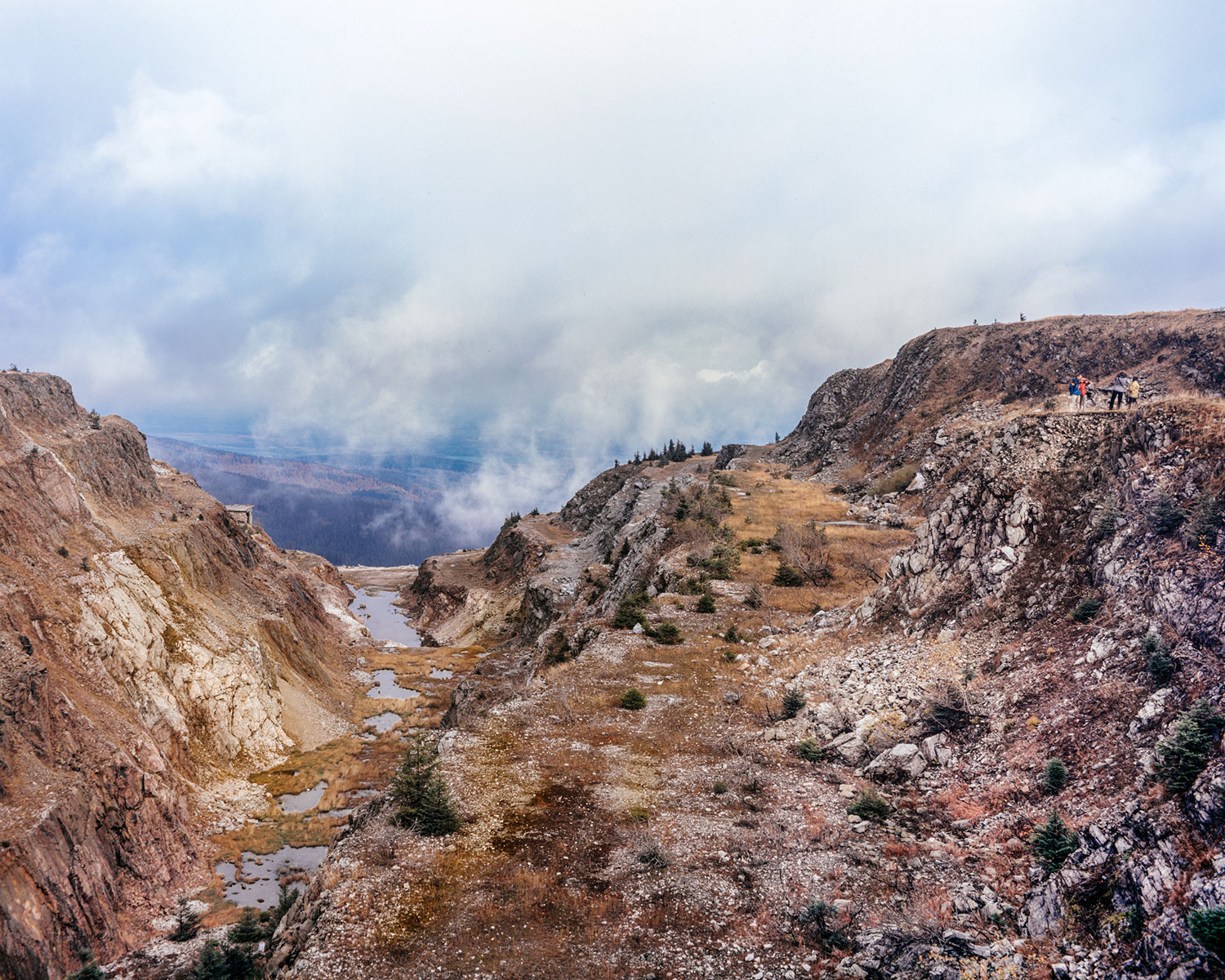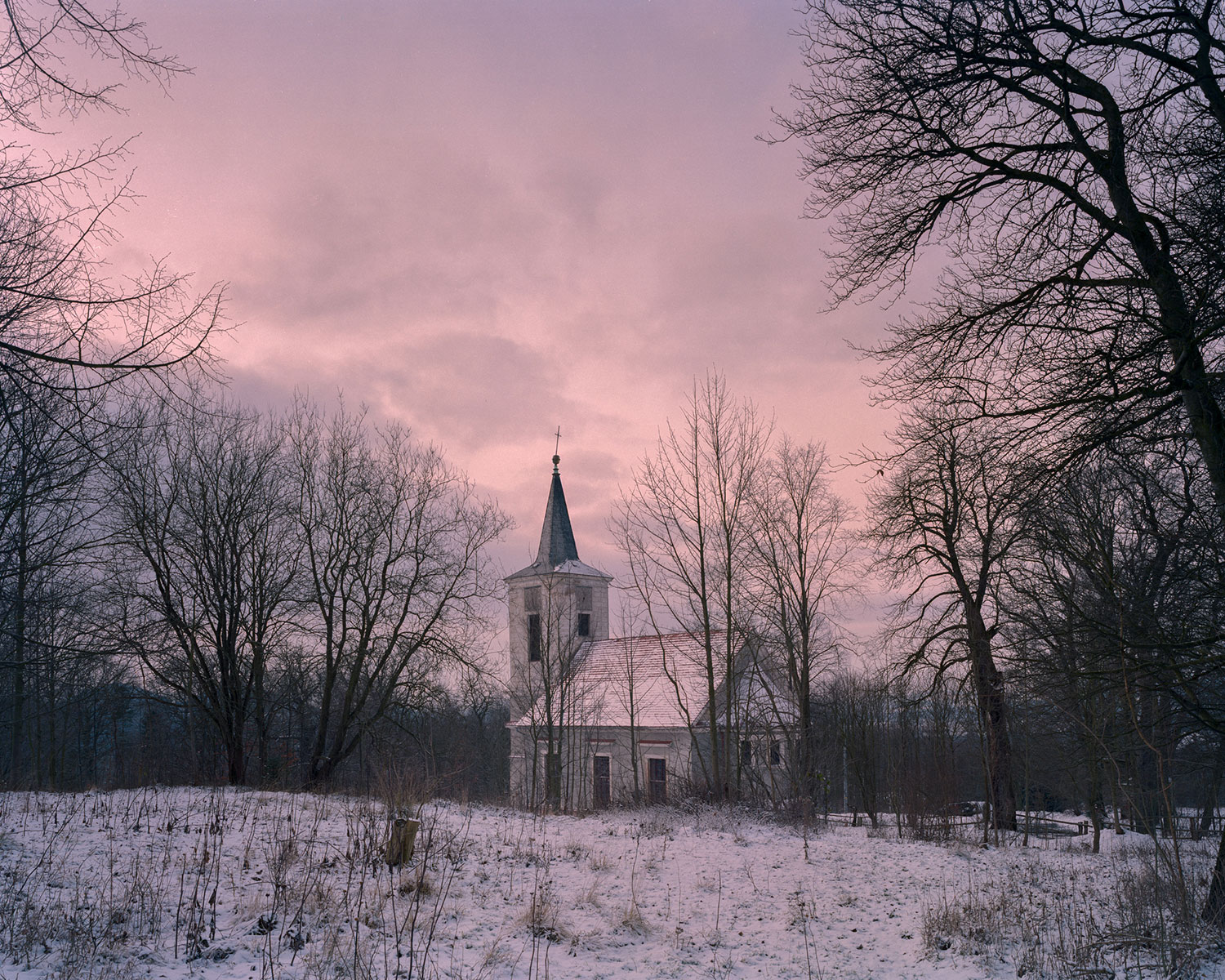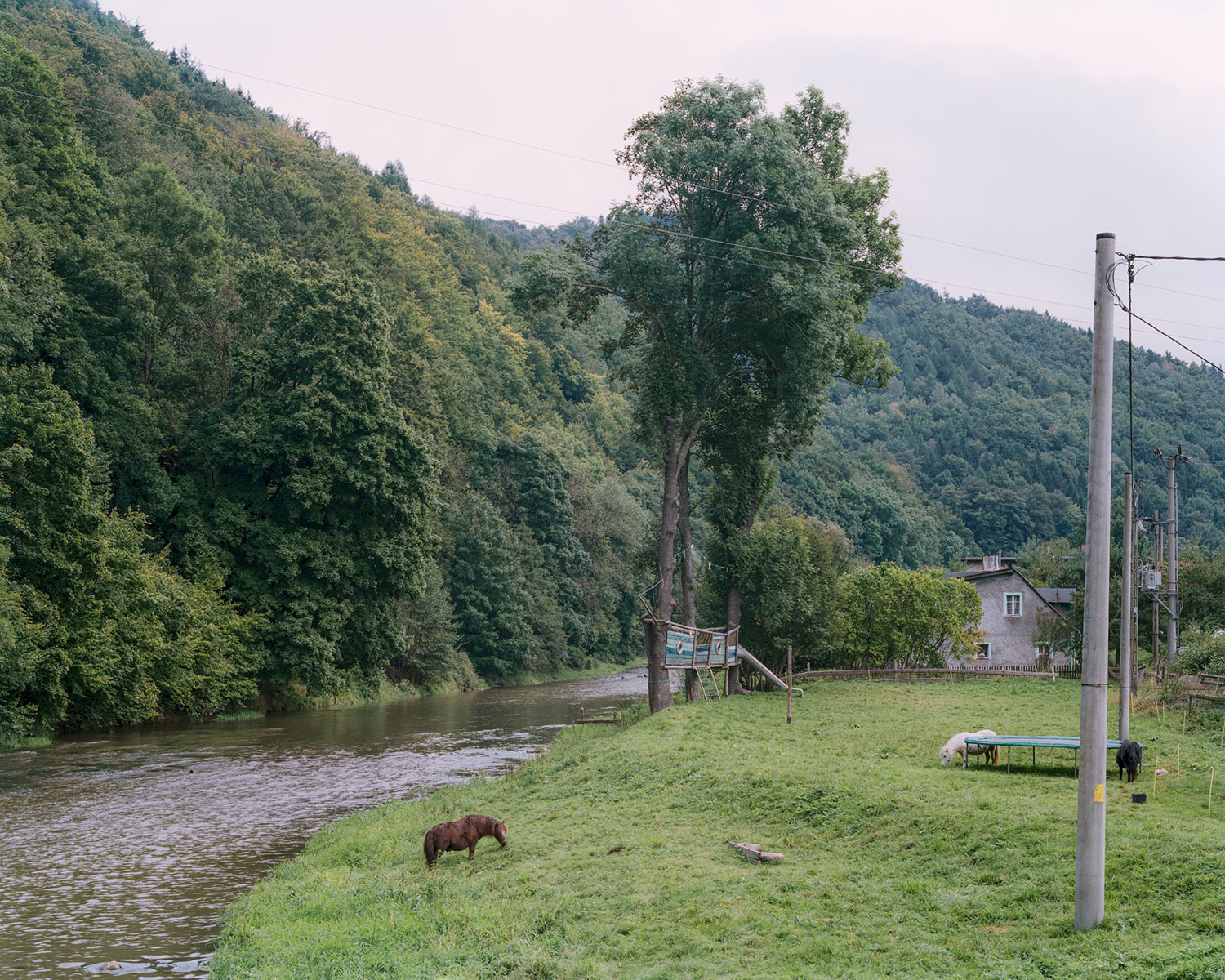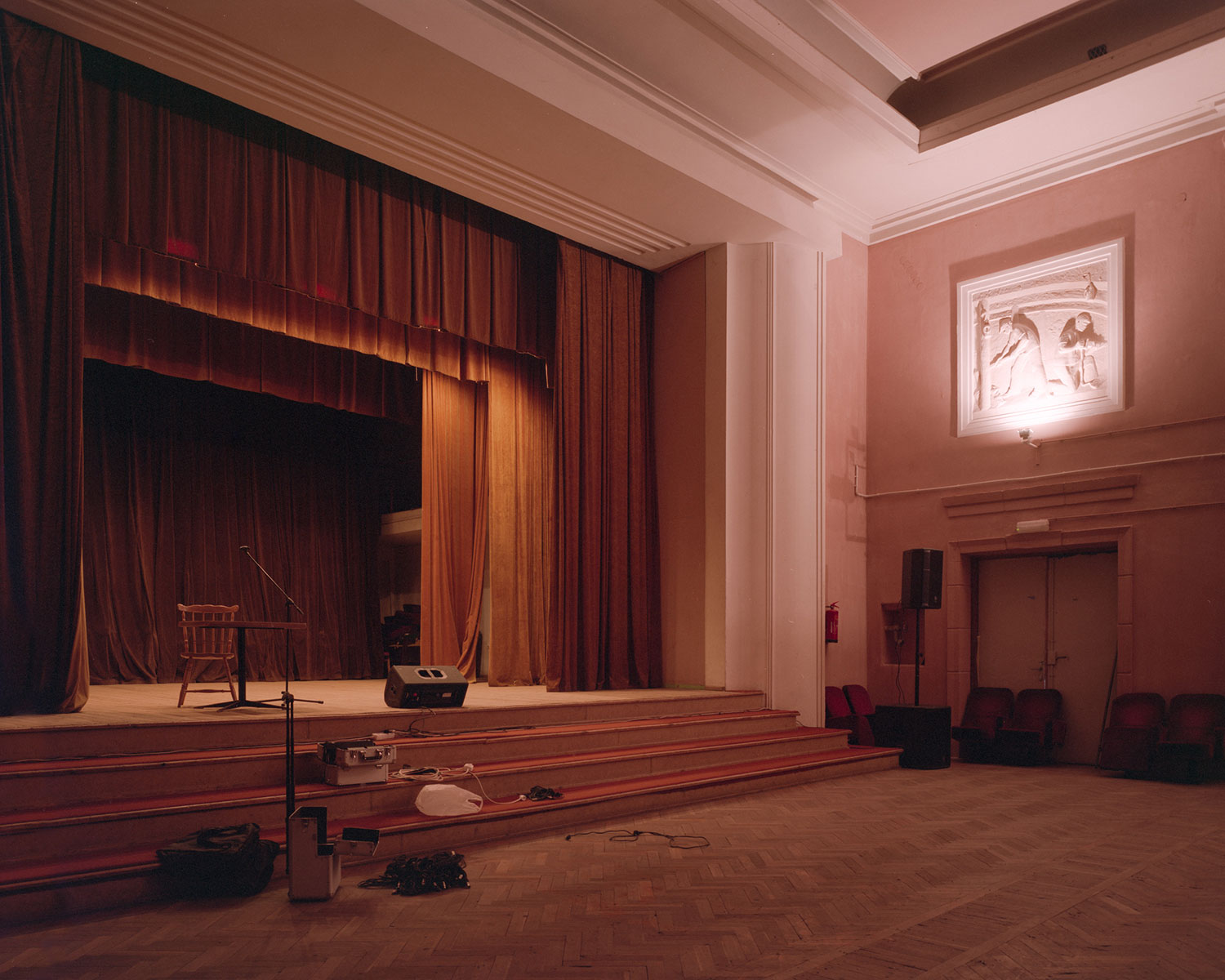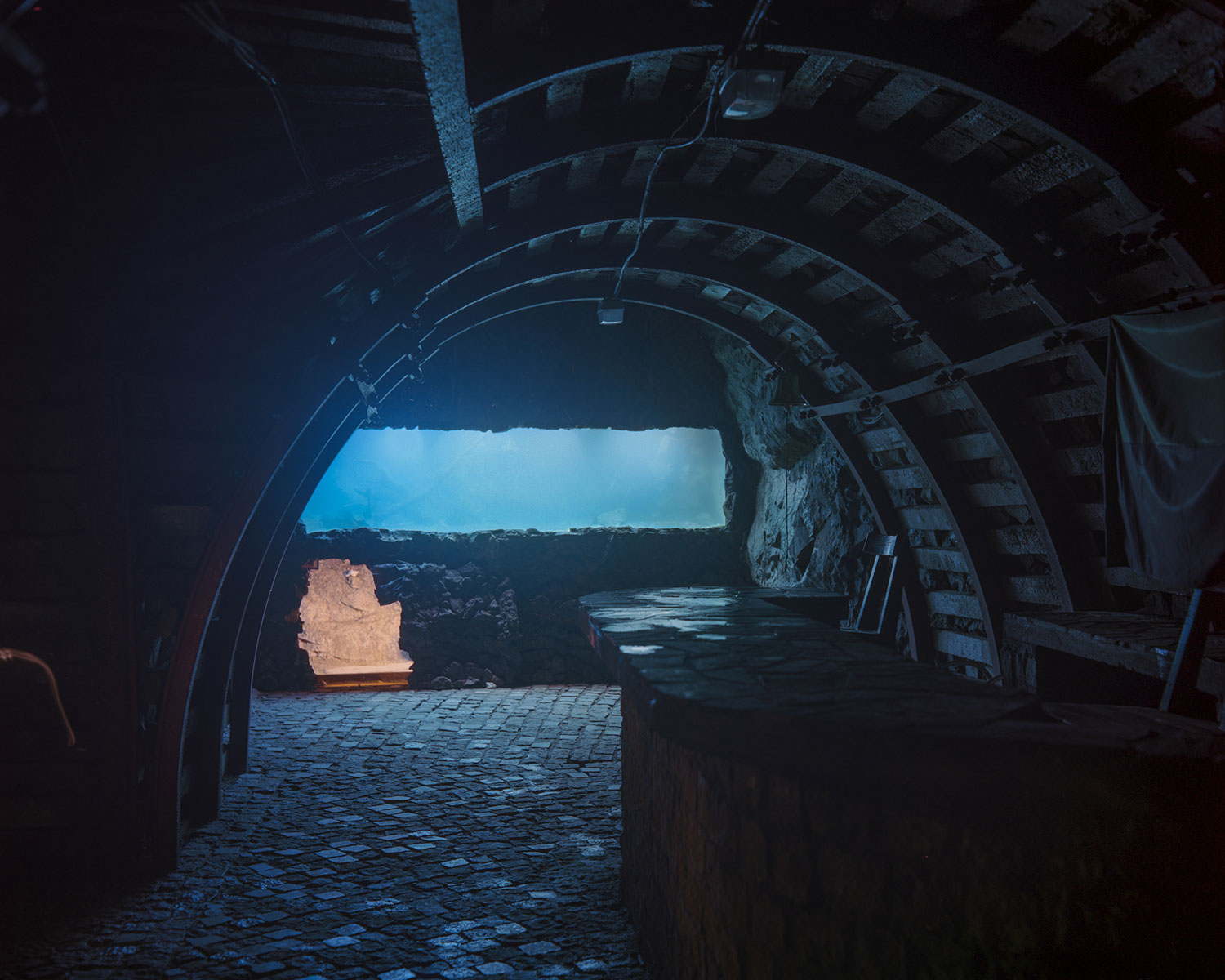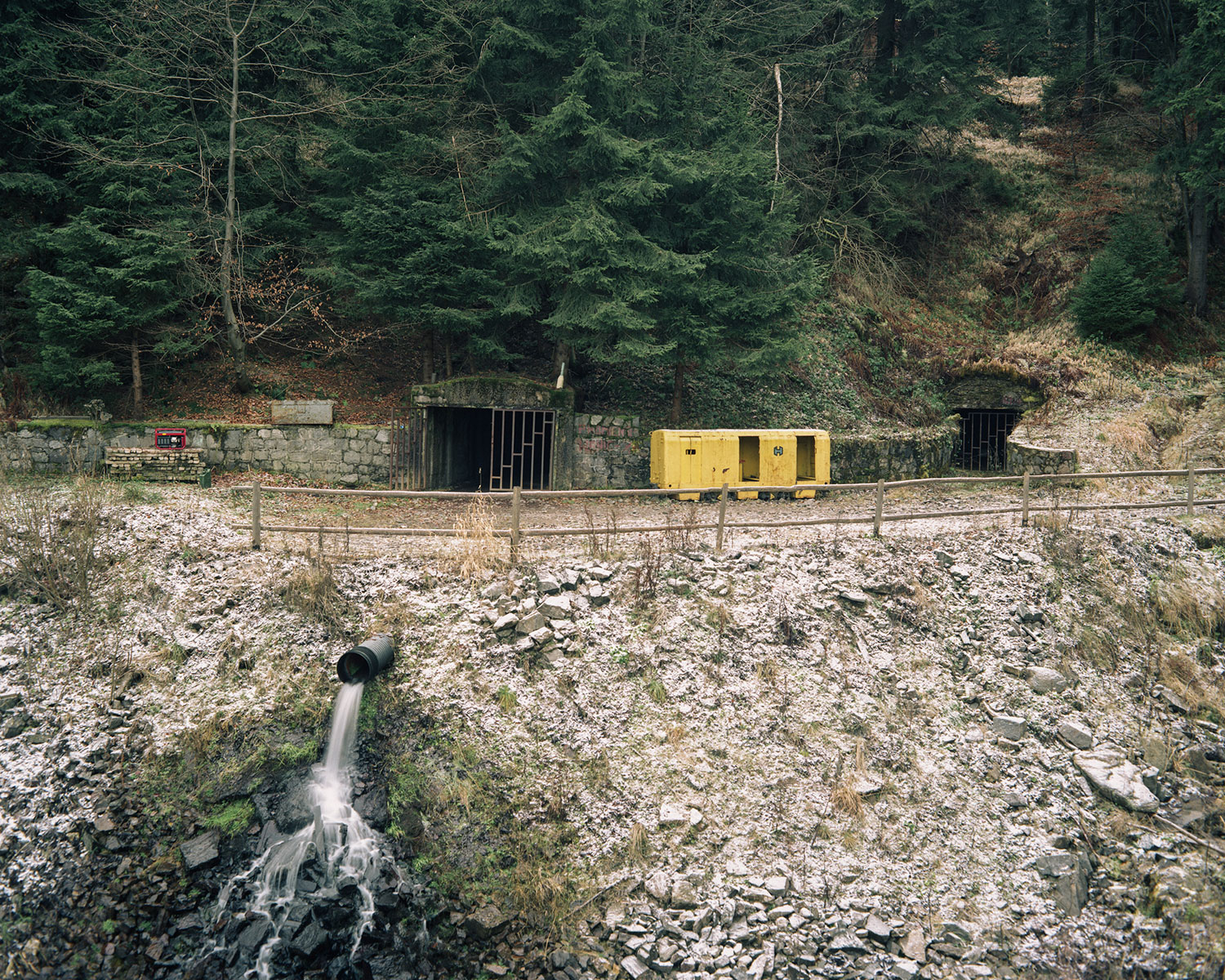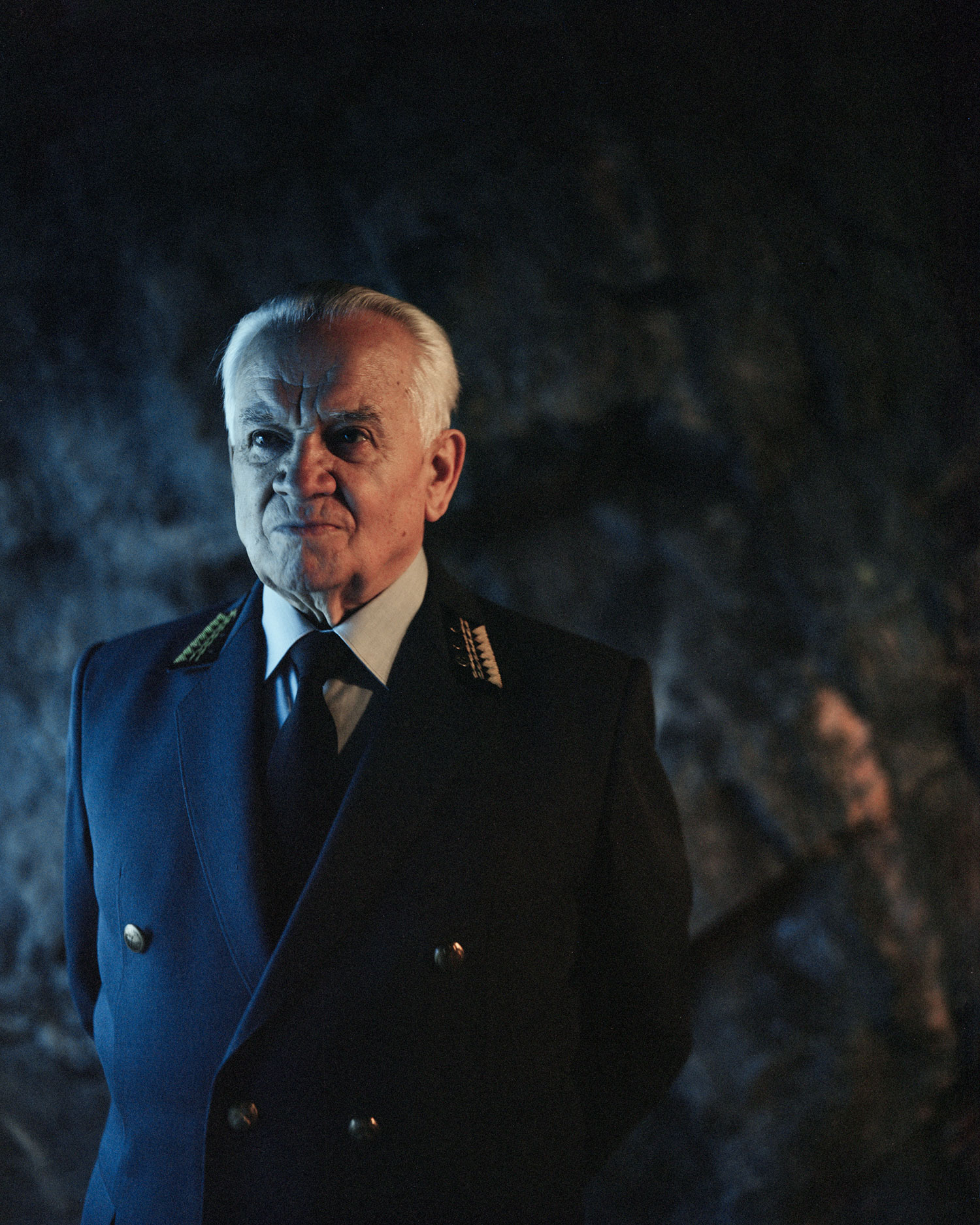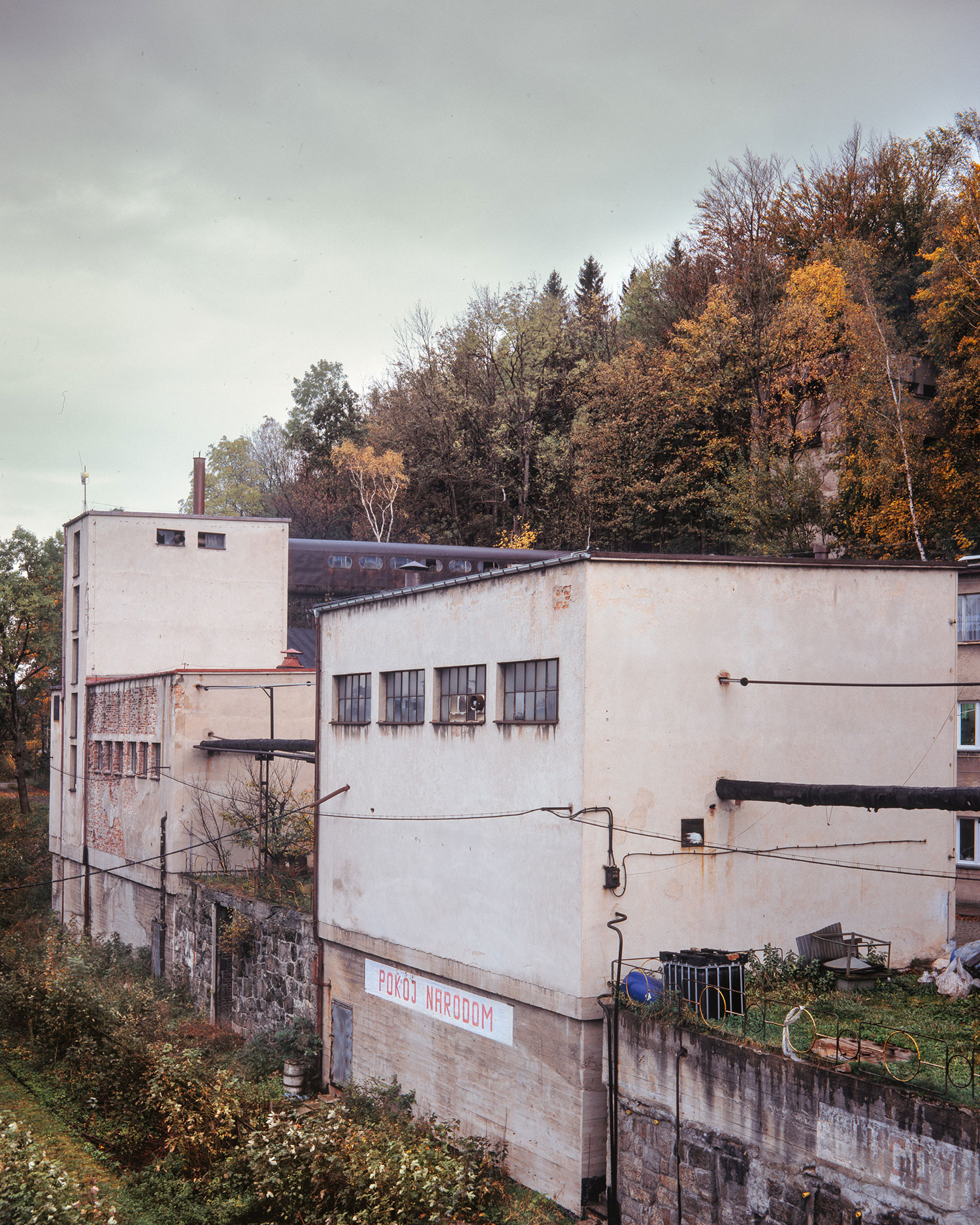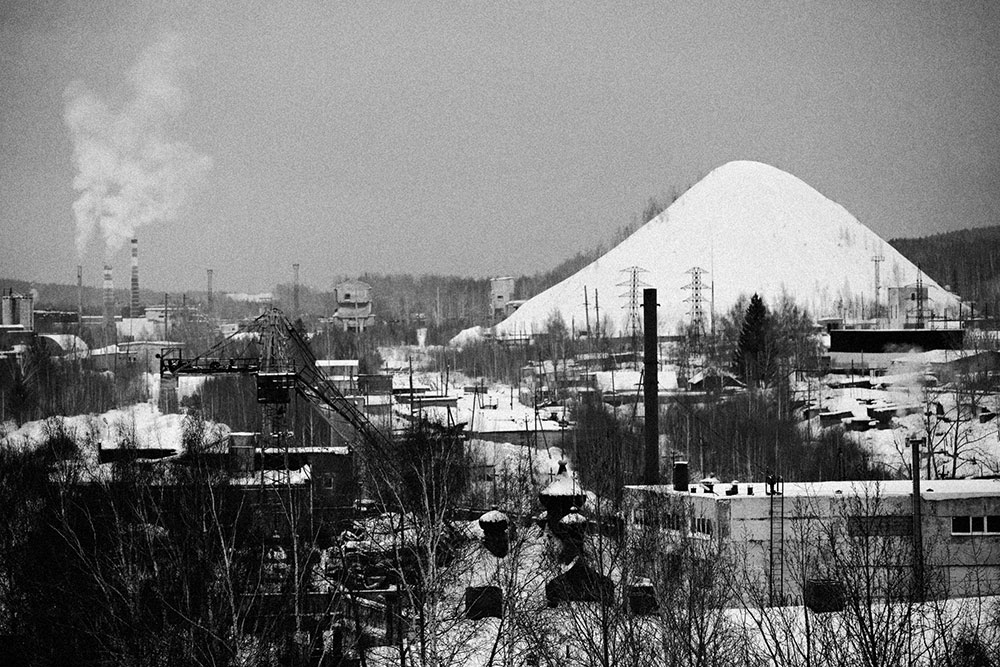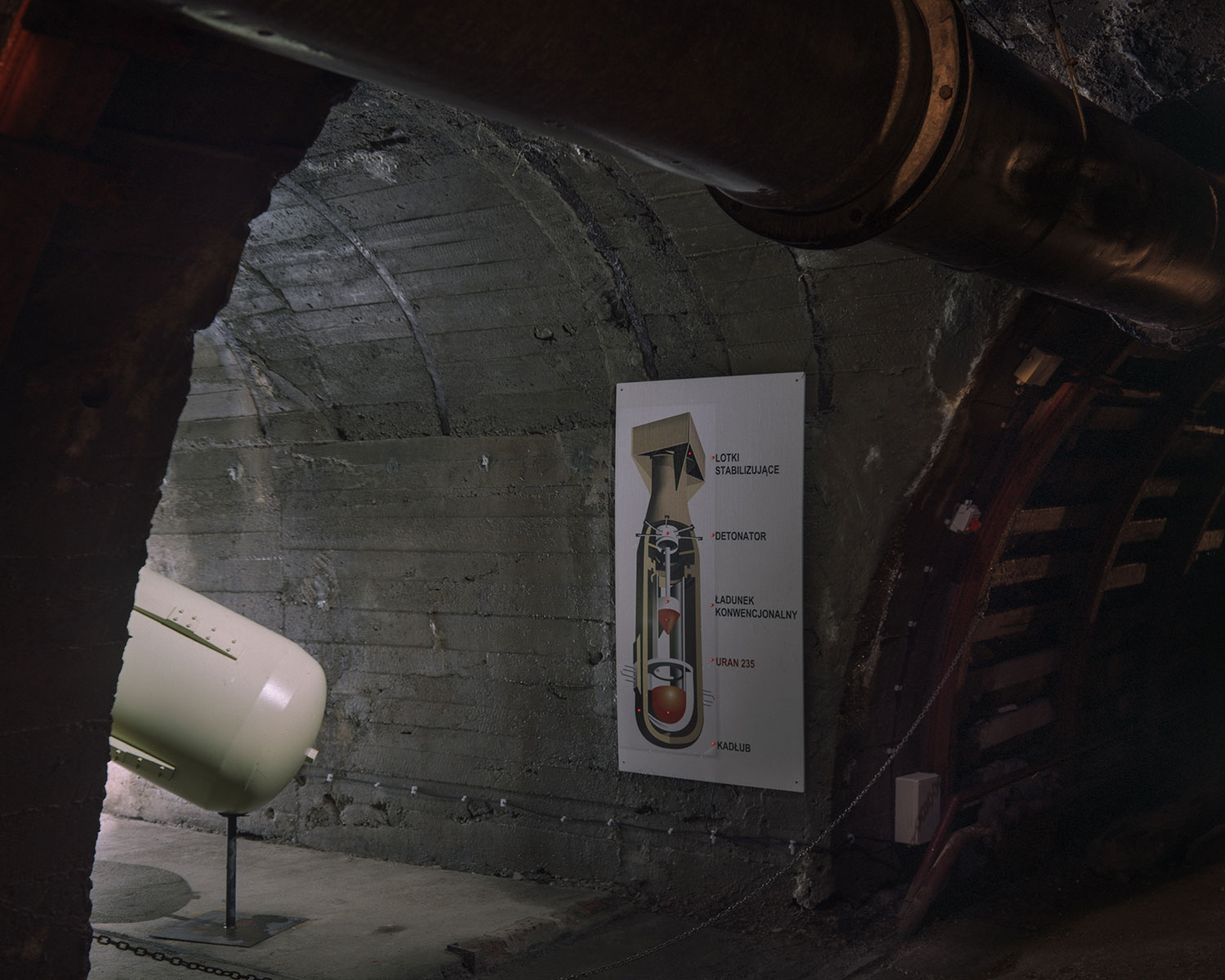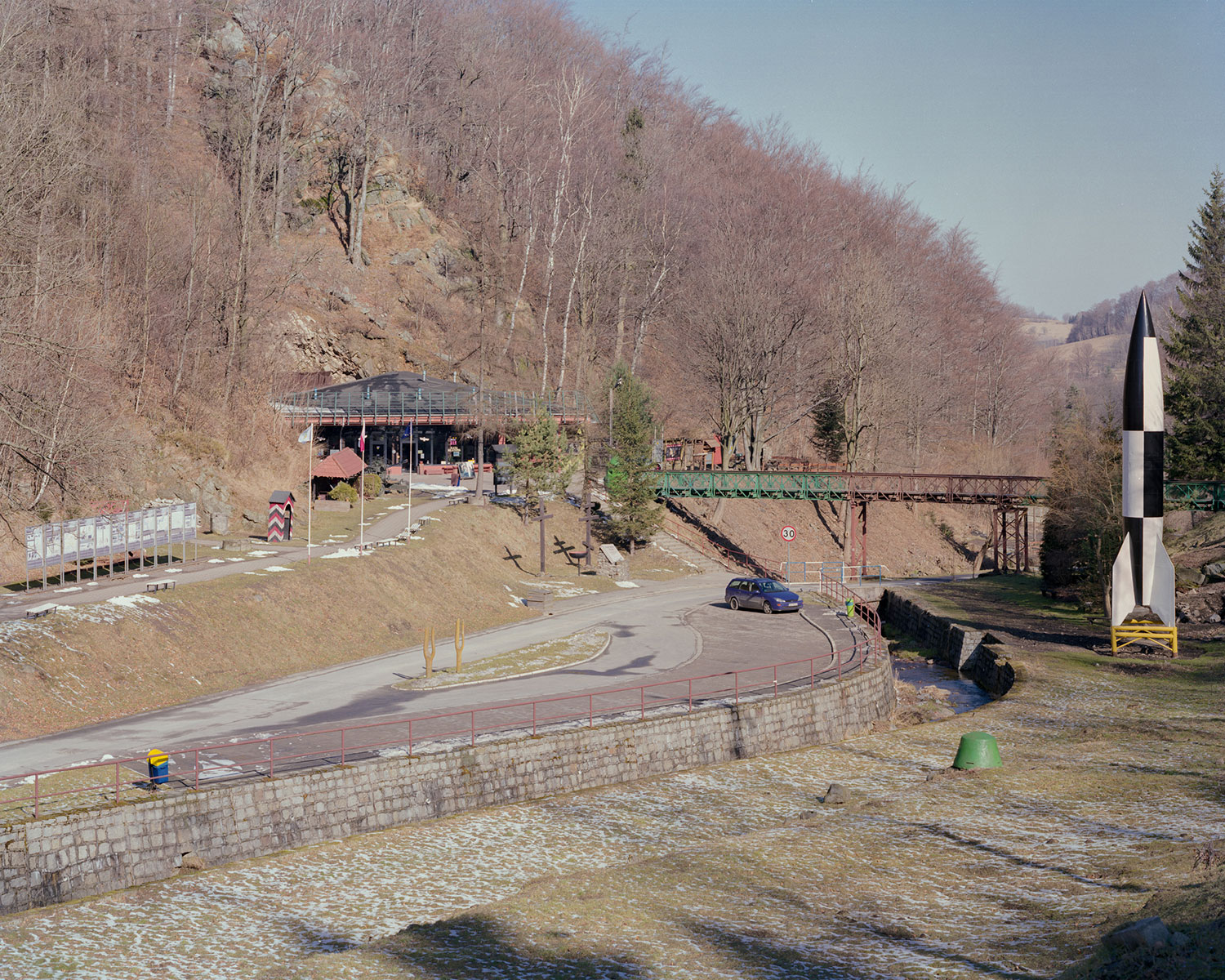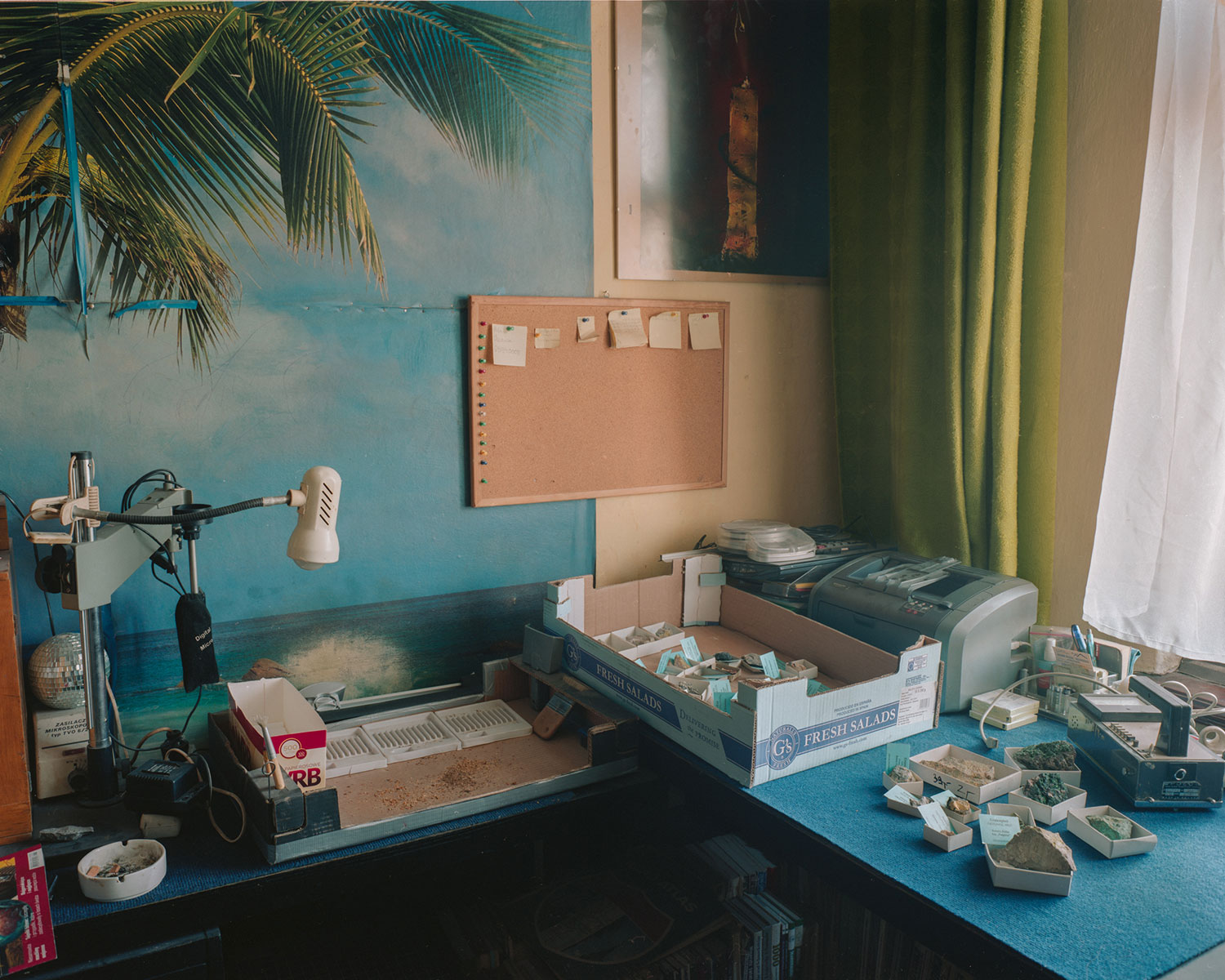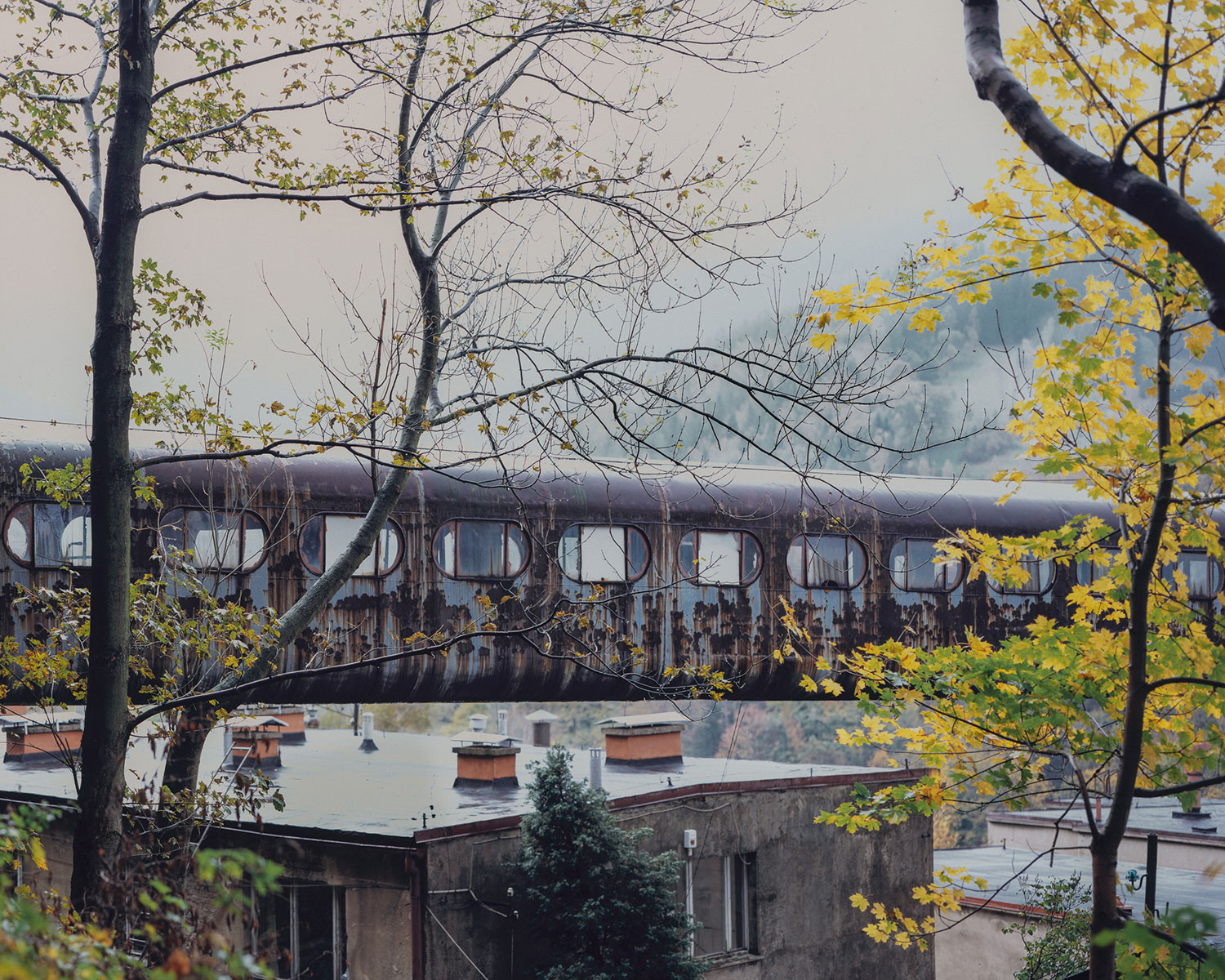The Sudeten mountains in south-west Poland were once one of the primary sources of uranium for the Soviet Union. These days the mines are empty, abandoned and derelict, but the mountains still keep their secrets: the hundreds of people who died in mining accidents or were taken away by secret police, or the entire towns which ceased to exist. Polish photographer Michał Sierakowski documents the peaceful mountain landscapes in search of the truth which lies deep beneath the surface.
I’ve been visiting the Sudeten Mountains for hiking or skiing since I was a kid, so I know this region very well and feel a strong attachment to it. This rich mining region has a long and complicated history. It was Polish, Czech then German and, after the Second World War, it was Polish again. Pull over somewhere in the forest, take a short walk and you will probably find some pits which used to be medieval silver mines or concrete slabs marking a place where Nazis tried to build an underground military complex. If you’re lucky you might stray into a magnificent, long-forgotten granite quarry, and if you’re not you might fall down a hundred-metre shaft hidden in the bushes, the remnants of a 19th-century copper mine. I’ve always been interested in mines, abandoned factories, quarries — post-industrial locations with an apocalyptic, mysterious feel. I started to pin-point those places on the map and look for others on online urbex or speleology forums. I discovered that some of the places were in fact exploratory adits built in search of uranium ore. It struck me that you could accidentally find forgotten uranium mines in a forest, in a totally inconspicuous cave. So I started to do some more research and I found that in the 1950s, Poland was one of the major suppliers of uranium for the Soviet Union.
The city of Miedzianka ceased to exist. It was located on a hill which after more than 600 years of mining looked like a Swiss cheese
Browsing through the documents, pictures and personal stories, I also realised how insanely obsessed the Soviets were with uranium. They paid for construction of facilities, exploration and research — all done by Polish engineers and workers — bought the machinery, paid the miners’ salaries, built housing estates and facilities for staff, and financed the whole process from the beginning till the end. On the other hand, they didn’t care about the safety of the miners or the environment at all. Hundreds died in mining accidents or were killed by the NKVD. The city of Miedzianka ceased to exist. It was located on a hill which after more than 600 years of mining looked like a Swiss cheese. When the Soviets started to overexploit medieval adits and dig new ones in the 1970s, the last inhabitants were forced to leave after a few houses collapsed and the rest were starting to crumble.
The locations which bear the traces of the uranium obsession are easy to access: the two biggest mines are run nowadays as minor tourist attractions filled with kitschy artefacts — note the piranha aquarium on one of my pictures — while the rest remain hidden in forests, forgotten and rarely visited by anyone. When it comes to documents, vintage pictures or events, it is also not difficult to research. I visited the regional branch of the National Atomic Agency, and it looked like I was the first visitor in 30 years: a small 70s-style office with one bored guy looking like his job was to do nothing every day. He was rather surprised that I was interested in the topic and shared the contacts of a few people who might remember something and also pointed me to some regional museums which might have some old documents and mining paraphernalia. The uranium mining took place more than 60 years ago, so almost all the engineers or miners have died by now. The only valuable contact was the former R&D director of R-1 Industrial Works (cryptonym of a uranium enriching plant and HQ of the industry). He is also portrayed in one of my pictures.
The uranium mines were bled dry by the Soviets — and if not completely dry, they are now inaccessible. Miners were interested only in the richest ores yielding good prospects and the rest of them — not as rich, but still worth extraction and utilisation — were left behind, dumped as waste or used as gravel for road construction. In the 1970s people joked that you could see the roads glowing in the night because of that. As most remnants of the industry had gone, I decided to use uranium mining as a core topic for my project in order to tell something more universal.
Mountains, mining, landscape and uranium felt like parts of something bigger and greater, as if there was something divine in all of them. Remote, pristine, grandiose mountains were the embodiment of the sublime for the Romantics. They held the promise of minerals buried deep below as well as a mysterious threat. Every culture has its own legends about mischievous ghosts of the mountains waiting for lost wanderers. Somehow there was a similar, quasi-religious attitude towards nuclear energy in the 20th century: there was the promise of salvation through atomic power and cheap energy and fear of the Armageddon that this new power could unleash.
There was a quasi-religious attitude towards nuclear energy in the 20th century: the promise of salvation and fear of Armageddon
So in some ways my project is more about the human relationship with mountains. We feel like we have tamed them by harvesting their minerals and by covering them in trails and ski routes. But nature is slowly crawling back to take what is rightfully hers. We can cut a hill in half to drill a giant quarry, but give it some time and the quarry will be taken back by the forest, and a little more time and erosion will make it natural again. Dig mines underneath a city and after 30 years nature will reclaim the town, burying the buildings in the ground. For nature we are small figurines and nothing more. We can drill, dig and cut, we can feel like gods, but we are just building castles on sand.
Interview: Anastasiia Fedorova
Image: Michal Sierakowski
